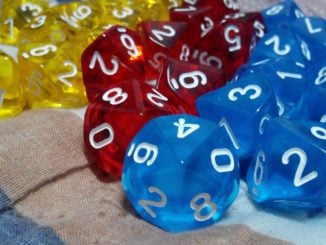
We have officially ranked all of the cantrips available to a new Bard in the fifth edition of Dungeon and Dragons! A cantrip is a spell that can be cast at will, does not take up an available spell slot, and it does not need to be prepared in advance. This is a spell that your character has perfected over time, which is why its performance sounds so simple – it is like you are doing it from muscle memory. Cantrips can offer characters like sorcerers and wizards a lot of utility throughout the game, so it is important to pick the right cantrips for your character. That is exactly why we ranked all of the available cantrips for your Bard. Check out our faves in the Best Bard Cantrips 5E Rankings.
Our Best Bard Cantrips 5E Rankings
So how many cantrips can a Bard learn? Exactly four. You get your first two at character creation, another at level four, and the last cantrip at level ten. You will need to be extra diligent when you select your cantrips, as the last thing you want to do is to waste a free spell slot on an ability that you will never use. So without further ado, here is our Official Ranking of all of the Bard’s Cantrips in Dungeon and Dragon’s fifth edition.
9. Mending
- School: Transmutation
- Casting Time: One Minute
- Range: Touch
- Components: Verbal, Somatic, Material (two lodestones)
- Duration: Instantaneous
With a little touch, and a minute of waiting, you fix a break no longer than a foot in length. No magic is restored to it, but at least it’s back! Unless your rogue breaks lockpicks like toothpicks, you probably don’t need this.
8. True Strike
- School: Divination
- Casting Time: One Action
- Range: Thirty feet
- Components: Somatic
- Duration: Concentration, up to one round
With the point of a finger, the True Strike spell will allow you to see the weakness of one enemy. On your next round of combat, you will have an advantage over that enemy as long as this spell is still active. Having an advantage means that you get to roll two dice when you are attacking instead of just one. After the roll, you select the higher of the two and that will be the roll you make for the attack.
Firstly, this spell requires concentration. That means all any enemy has to do is interrupt your train of thought and the spell will end. Secondly, you could be spending this turn doing something more productive… like attacking. You have to use a whole turn during heated combat to use True Strike; using two turns to land one attack. True Strike can be cast from thirty feet away, but it will not stop an enemy from coming in and bashing your face if all of your other comrades are busy smashing the other foes. And because there is no parrying ability outside of a skill, you are better off just swinging for the fences and taking two attacks.
7. Prestidigitation
- School: Transmutation
- Casting Time: One Action
- Range: Ten feet
- Components: Verbal, Somatic
- Duration: Up to one hour
Running up the end of our Bard Cantrips 5E list is Prestidigitation – the parlor trick of spells in the Dungeon and Dragon’s universe. When you are casting this minor magical trick, you will create one of the following effects:
- Create an instantaneous, harmless sensory effect such as a spark, a low gust of wind, a faint musical note, or an odd but not terribly off-putting odor.
- Instantly light or put out a candle, torch, or a small campfire.
- Instantly clean or dirty up an object that is at most 1 cubic foot.
- Chill, warm-up, or flavor up a nonliving piece of material that is up to one cubic foot long for an hour.
- Make a small mark or a symbol appears on an object’s surface for one hour.
- You create a non-magical trinket or an illusion that fits in the palm of your hand until the start of your next turn.
You can have four effects going at the same time. Prestidigitation is a really fun spell, with a lot of utility if you’re creative. The problem is, you have so few cantrip slots! If you’re willing to sacrifice a bit of utility for the fun little tricks of Prestidigitation, then go for it. Especially if your GM is a fan of the spell; then you might get away with some awesome things! However, you might want to get more focused support effects instead.
6. Light
- School: Evocation
- Casting Time: One Action
- Range: Touch
- Components: Verbal, Somatic
- Duration: One hour
You touch something that’s maximum 10 feet long. The item brightens like a torch, in any color that you’d like. If you touch someone who doesn’t want to have a neon green shirt, then they get a Dexterity save. Good utility, if your party doesn’t want torches or if few people in your party has Darkvision.
5. Dancing Light
- School: Evocation
- Casting Time: One action
- Range: 120 feet
- Components: Verbal, Somatic, Material (phosphorus, wychwood, or a glowworm)
- Duration: Concentration, up to one minute
You make four small torch-sized lights – or one humanoid form – that shed light in 10-foot radiuses. You can move them at will, but they disappear if they get 21 feet away from each other, or more than 120 feet away from you. Extremely limited, doesn’t last long, takes your concentration… It’s an okay scouting spell at best.
4. Minor Illusion
- School: Illusion
- Casting Time: One Action
- Range: Thirty Feet
- Components: Somatic, Material (small amount of fleece)
- Duration: One Minute
While most of my focus in this article has been on dealing damage, Minor Illusion has an effect on a different aspect of Dungeon and Dragons – role -playing! And in the realm of role-playing, you can do almost anything with Minor Illusion. As written, this spell will let you create a sound or an imaginary object that is at least thirty feet away from you. You cannot do both at the same time though.
If you create a sound, you can alter its volume to be as loud or as soft as you need it to be. The sound will go on continuously for the duration of the spell’s effect. If you create an image, the item must not be longer than a five-foot cube. Beyond being an item, the image will not affect any of the other senses. Any physical interaction with the image will reveal that the item is an illusion.
If someone goes to examine the sound or image, they will need to make a successful Intelligence check against your Spell Save DC. If they are successful, the illusion becomes faint to the character that made the successful check.
I know there are a lot of rules to follow with Minor Illusion, but an experienced or a highly imaginative player will be able to use this cantrip to get out of several situations.
3. Vicious Mockery
- School: Enchantment
- Casting Time: One action
- Range: Sixty feet
- Components: Verbal
- Duration: Instantaneous
You weird a sharp wit comprised of enchanted insults that will give your target a disadvantage when they attempt their next attack. If you succeed in affecting your target, they also take 1d4 in psychic damage. That damage increases to 2d4 at level five, 3d4 at level eleven, and 4d4 at level seventeen. To succeed, your opponent must fail their Wisdom saving throw. Just like True Strike, I believe that you would be better off using a much more offensive attack instead of Vicious Mockery. It is a little better because it can deal some damage.
2. Mage Hand
- School: Conjuration
- Casting Time: One Action
- Range: Thirty Feet
- Components: Verbal, Somatic
- Duration: One Minute
Much like Minor Illusion, Mage Hand’s primary function has nothing to do with combat. But unlike Minor Illusion, Mage Hand can physically affect your surroundings. When you cast Mage Hand, you create a spectral, floating hand that can do the following actions:
- Manipulate an object
- Open an unlocked door or container
- Store or retrieve an item from an open container
- Pour the contents out of a vial
The hand can only interact with items that are within thirty feet of your physical character. The hand’s carrying capacity is less than ten pounds, and it cannot activate magical items. And because I feel that this is important to stress; you cannot use Mage Hand to perform an attack.
Despite these restrictions, I can see Mage Hand being a very important spell to get your team out of a precarious situation like being imprisoned, tied up, or needing to sneak something into your possession. Just wait until all attention is focused somewhere else, cast Mage Hand, and then you will be on your way to accomplishing whatever task you will need to complete. This spell also made the list of our Best Bard Spells in 5E.
1. Message
- School: Transmutation
- Casting Time: One action
- Range: 120 feet
- Components: Verbal, Somatic, Material (short piece of copper wire)
- Duration: One round
And number one on our Bard cantrips 5e List is Message. More than that, it is at the top of our Best Cantrips 5E list. You point your finger at your target that is in range, and you can whisper a message to that person. This is one of the strongest abilities in the game, as it will let you get information to your party without having to be right next to them. It could save your team a whole lot of time, especially if you are in a situation where you both need to remain silent.
Nerds and Scoundrels – Bard Cantrips 5E Rankings
And that concludes our Bard Cantrips 5E Rankings. Did we leave anything out? Disagree with our rankings? Let us know in the comment section below. And don’t forget to check out our Cleric Cantrips 5E Rankings if you need more DnD content.




Be the first to comment